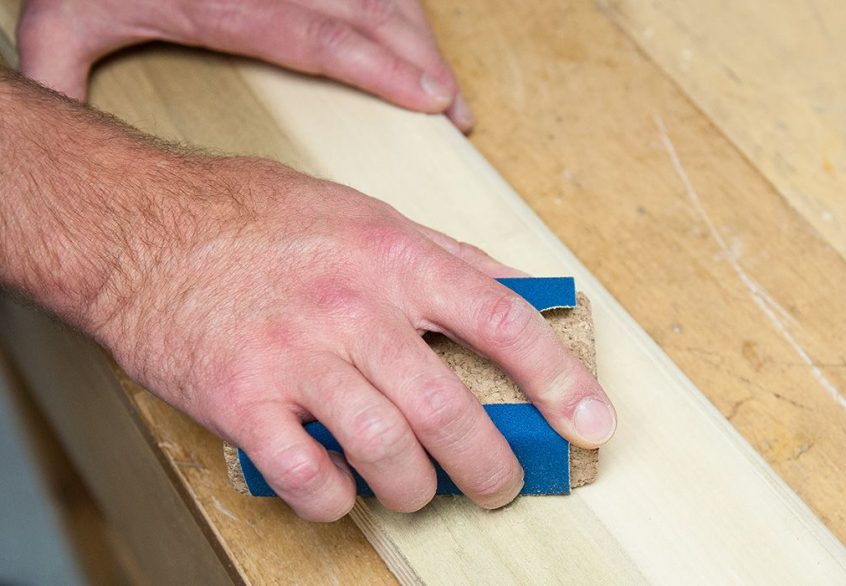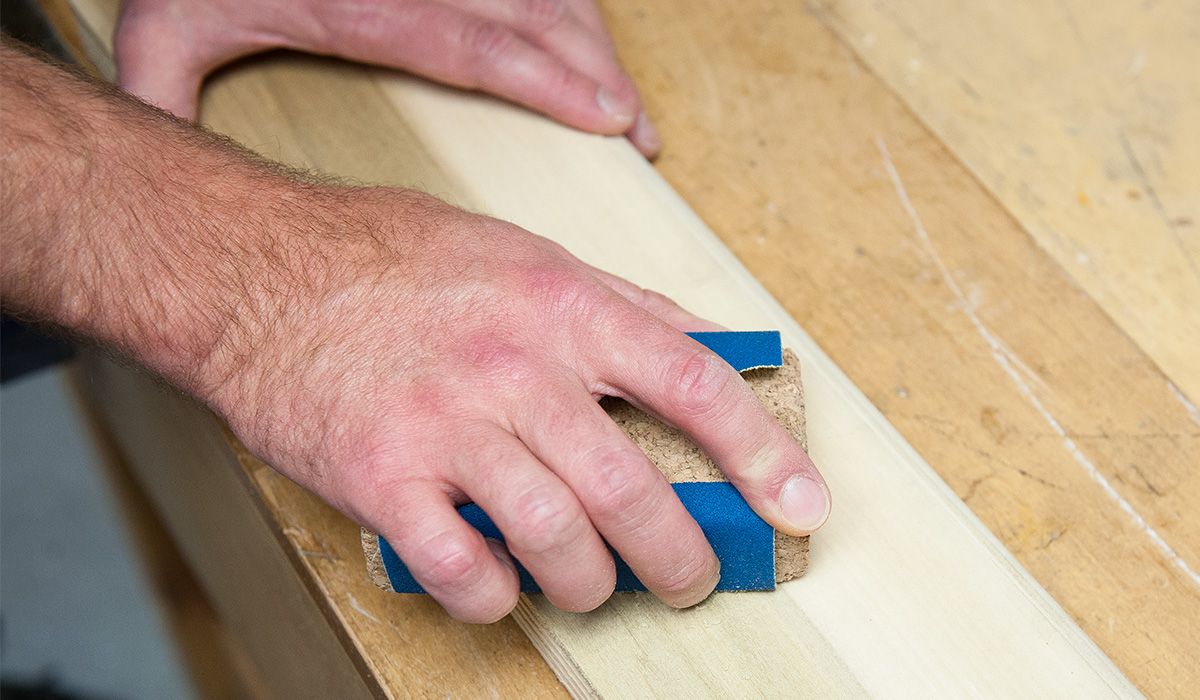Sandpaper Grit Chart For Wood

Removing rust on metals or flaws in wood; The diameter of the particles ranges between 190 to 265 micrometers.
 Festool Abrasives Details (With images) Festool
Festool Abrasives Details (With images) Festool
If it's pigmented stain, the sanding block builds up with gunk after only a few minutes.

Sandpaper grit chart for wood. Used for sanding of harsh wood and the expulsion of arranging blemishes on the wooden surface is regularly best finished with this sanding paper. Free shipping on orders over $25 shipped by amazon. 4.6 out of 5 stars 6,871.
The most important thing to consider before starting to sand is what sequence of tools you’ll use for a sanding project. Different grit sizes are also useful for varying surface types, i.e. This chart compares sandpaper grits using three different grading systems:
The fepa standards denote such types of sandpaper grit by p60, or p80, and cami standards denote it as 80. Large grit makes a good sandpaper for metal and is used in applications such as: 40 to 80 grit sandpaper:
Higher grit numbers (finer with smaller particles) are used for smoothing wood and painted surfaces between coats. Coarse grit sandpaper is a good choice for rough sanding and removing stock quickly, such as sanding the edge of a sticking door with a belt sander. Sandpaper abrasive selection in terms of sandpaper abrasives, a common approach is to start sanding with aluminum oxide sandpaper using a power sander and then switch to garnet.
Which, in a progression of sandpaper for wood, turns your belt sander into a tool with a limited grit range from course (40 grit) to typically no more than a 180 grit. Choosing a sandpaper grit progression. Sandpaper is a paper which has sand or any other abrasive material stuck to it and used to smoothen and polish wood and other surfaces.
Sandpaper grit grades and uses. Sandpaper grit chart (a complete sandpaper grit guide) january 21, 2021 by marshall pascal. This entry was posted in finishing on december 23, 2014 by bill kovalick.
Medium grit sandpaper makes a good starting point for most projects, from sanding unfinished wood to removing old varnish. Use it for extremely rough surfaces when wood has dips, gouges. Aggressive scratching is desired when you want to remove much material or to create a rounded edge, or to remove old paint or blemishes.
100 to 150 grit sandpaper: Scale grit particle size in microns particle size in inches 4.5 1842 0.07252 p12 1815 0.07146 p16 1324 0.05213 16 4 1320 0.05197 p20 1000 0.03937 m 20 3.5 905 0.03563 p24 764 0.03008 a 24 3 715 0.02815 30 2.5 638 0.02512 c p30 642 0.02528 36 2 535 0.02106 r p36 538 0.02118 40 1.5 428 0.01685 o p40 425 0.01673 50 1 351 0.01382 g p50 336 0.01323. Once you have completed smoothing the surface, you can paint it to further reduce any evidence that a repair was made.
This sandpaper choice is used for quick removal of material such as paint or wood and is extremely rough. P80 grit is the best option for removing saw blade burns and deeper surface scratches. The higher grit number is equivalent to a finer abrasive, which creates smoother surface finishes.
Once it has dried, you can then use a fine grit of sandpaper to smooth out the surface. What does the grit number on sandpaper mean? A wood sandpaper grit chart classifies the sandpaper numerically based on the size of the grit.
Begin stroking the wood with the sandpaper. Such sandpaper grit types are not suited for varnish removal or removing paint on wood. It belongs to a class of materials known as “coated abrasives” as it is made up of a flexible paper backing which has a thin film of glue (or any … sandpaper grades explained:
Choose accordingly with our sandpaper grit chart and by following the nuances in grades and material. The grit of sandpapers is a rating of the size of abrasive materials on the sandpaper. The lower the grade, the rougher the sandpaper.
It does this by cutting the fibers on the material's surface. In the case that you’re working with a hardwood like poplar, you can probably jump the line to p120. The grit grades below are a guide to the commonly found sandpapers available and thier uses.
Sandpaper grits for wood start from around 20 and go up to 600, but you will just need several of them, keeping in mind basic classification from the sandpaper grit chart: Typically, the only times to start with coarser sandpaper (80 or 100 grit) are on boards with deep scratches or gouges or uneven joints after gluing. Lower number grit (coarser with larger particles) are generally used on tougher surfaces for heavy sanding, stripping, or cutting hard surfaces.
The project you are working on will determine the sandpaper grit you should use, as well as. They can be used in sanding unfinished wood as well as removing old varnish. The sandpaper grit you choose can make a big difference in the final look of your woodworking project.
100, 150, and 220, for example. These kinds of sandpaper grit are used to prepare wood for the finishing. Grades chart, grades for paint & sandpaper grain read more »
Grit refers to the abrasive particles glued to the surface. When determining which grit best follows the one just used, remember that the next grit should be no more than about 50 percent higher than the one before it; 1) coated abrasives manufacturer’s institute (cami), 2) federation of european producers association (fepa), and 3) the “0” or “ought” grade system.
Manufacturers differ on the scale but this is the average. A good general rule for grit progression is to use 100 or 120 grit for initial sanding, 150 or 180 grit for the next pass, and 220 grit for the final pass. The hard rubber type is best.
Get it as soon as wed, mar 3. The type of stain will dictate how much effort is involved in removing it.
 Uses for Each Sandpaper Grit Chart Sandpaper Grades for
Uses for Each Sandpaper Grit Chart Sandpaper Grades for
 How to Make a Wooden Wall Measuring Stick Growth Chart
How to Make a Wooden Wall Measuring Stick Growth Chart
 Uses for Each Sandpaper Grit Woodworking projects diy
Uses for Each Sandpaper Grit Woodworking projects diy
 Handy Office Supply Sandpaper Sorter Woodworking
Handy Office Supply Sandpaper Sorter Woodworking
 Kevin Russ White Sands Art Print in 2020 Sand art, Art
Kevin Russ White Sands Art Print in 2020 Sand art, Art
 DIY Ruler Growth Chart Growth chart ruler, Growth ruler, Diy
DIY Ruler Growth Chart Growth chart ruler, Growth ruler, Diy
 Get More From Hammers, Saws, and Other Hand Tools
Get More From Hammers, Saws, and Other Hand Tools
 different grades of sandpaper Google Search Home
different grades of sandpaper Google Search Home
 5 Top Tips For Hand Sanding The Knowledge Blog Sanding
5 Top Tips For Hand Sanding The Knowledge Blog Sanding
 Pin by CK on Infographics Sandpaper, Rough wood, Diy
Pin by CK on Infographics Sandpaper, Rough wood, Diy
 Uses for Each Sandpaper Grit Chart Sandpaper Grades for
Uses for Each Sandpaper Grit Chart Sandpaper Grades for
 True Grit How to Choose Sandpaper Grit and Wood Finishes
True Grit How to Choose Sandpaper Grit and Wood Finishes










